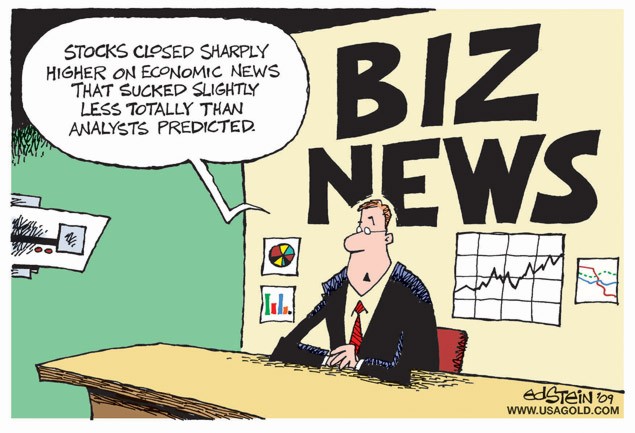Six ways to fight the coming bear bond market
Post on: 5 Сентябрь, 2015 No Comment

Traders in the 10 year bond options pit at the Chicago Board of Trade signal orders shortly after the Federal Reserve’s decision to leave short-term interest rates untouched between zero and 0.25 percent in Chicago, January 25, 2012.
Analysis & Opinion
NEW YORK (Reuters) — Brace yourselves, bond investors: Fixed-income experts warn that a long bear market lies ahead. Long-term bond returns will be modest at best, and negative at worst.
We’re in the foothills of a gradual rise in interest rates, said world-class bond manager Daniel Fuss, of the $21.2 billion Loomis Sayles Bond Fund, at a recent press conference. He predicts a 20-year trend of rising rates — a bleak outlook for bonds, whose price falls when rates rise.
Investment heavyweights like Bill Gross, manager of the $252.46 billion Pimco Total Return Fund, and Rob Arnott, chairman of Research Affiliates, a Newport Beach, California, asset management firm, also foresee rising rates. And they warn that U.S. Treasuries — still deemed the world’s safest bonds — are particularly vulnerable because their yields are so low. In fact, yields on 10-year Treasuries are now so low that they’ll deliver a negative return after taxes and inflation, points out Arnott.
Most investors are ignoring such warnings, however, and it’s easy to see why: for the past three decades interest rates have declined, providing a tailwind that has boosted average bond returns to 8.5 percent a year since 1980. Despite current low yields, investors have poured $682.8 billion into bond mutual funds since the 2008 financial crisis, while stock funds experienced net outflows, according to Lipper, a unit of Thomson Reuters.
But current rates are far more likely to rise than fall. Experts say it’s time to stress-test your portfolios and lower your return expectations. Here’s how they recommend adjusting your investments:
1. Don’t dump bonds.
Even if they don’t provide real income, you need them for diversification. The role of bonds in a portfolio has been and always will be to mitigate the volatility of stocks, said Chris Philips, a senior analyst in Vanguard’s investment strategy group. Bonds are the true diversifying asset. (And don’t turn up your nose at diversification. In 2008, a 100 percent stock portfolio lost 37 percent; a 50/50 mix of stocks and bonds lost 16 percent.)
Bear in mind that if your principal shrinks in a bond fund, that loss will be partially offset by higher yields on the fund’s newly purchased bonds, said Christine Benz, a financial planner at Morningstar. Cash isn’t a great alternative, she adds. Inflation will gobble up its paltry interest, and there’s an opportunity cost to being in cash: even modest bond returns are more attractive.
2. Check your vulnerability to rising rates.
For a rough estimate of how much a bond fund may lose if Treasury yields rise by 1 percentage point over a 12-month period, subtract its SEC yield — which reflects dividends and interest earnings — from its current duration. (Both are prominently listed in a fund’s online profile.) That’s not a precise measure, but it gives you a sense of what can happen, said Philips.
3. Reduce your risk.
To cut risk, move some of your bond allocation into a fund with a shorter average maturity, and trim your exposure to Treasuries, whose low yield now lags inflation. For example, you could shift money from Vanguard’s Total Bond Index — which is Treasury-heavy — to Vanguard’s Short-term Bond Index fund. But don’t eliminate Treasuries from your portfolio however meager their yield, advised Joseph H. Davis, Vanguard’s chief economist. They are the ‘flight-to-quality’ diversifier — the refuge of choice when investors panic. (In 2011, for example, long-term Treasuries defied expectations and returned 29.93 percent, after purchases by rattled investors drove yields on 10-year Treasuries below 2 percent.)
4. Don’t chase yield.

Resist the temptation to pile into junk (aka ‘high yield’) or emerging markets bonds. Despite their attractions, both tend to perform like stocks during periods of uncertainty, said Ross Levin, an Edina, Minnesota, wealth manager. You own bonds to protect yourself when things blow up. If you’re nervous about long-term Treasuries, buy short-term investment grade bonds.
Junk bonds are particularly tricky in a rising rate environment, added Fuss in an interview with Reuters: When it costs more to borrow money, you don’t want to be invested in the bonds of companies that have to continually borrow to pay off what they already owe. The high yield universe is full of those companies.
5. Don’t depend on bond income alone.
Retirees can protect themselves by investing for total return. When your bonds aren’t kicking off enough income, you sell stocks and use some capital gains as income, explained Anna Pfaehler, a financial planner at Palisades Hudson in Scarsdale, New York. Retirees must spend less, said Fuss, bluntly. You can’t manufacture safe 10 percent yields today.
6. Hire an experienced bond manager.
Index funds invest in the entire market. Active managers argue that’s a disadvantage when the market faces rising rates. I love the simplicity of indexing, said Morningstar’s Benz, but I tend to agree. She recommended instead ‘free-ranging’ intermediate-term bond funds whose managers can shorten or lengthen duration, and invest internationally or in slightly lower quality bonds, within specific quality parameters — among them, Pimco Total Return, Harbor Bond Fund and Dodge & Cox Income.
Then again, even if you add an active fund to your portfolio, you may want to keep an index fund as your core bond holding. Lipper data shows that as a group, thanks partly to their lower expenses, bond index funds have trounced actively managed funds in the last three rising rate periods.
(The author is a Reuters columnist. To see more from Lynn Brenner, see link.reuters.com/ryf28s )
(Follow us @ReutersMoney or here. Editing by Beth Pinsker Gladstone and Phil Berlowitz)














